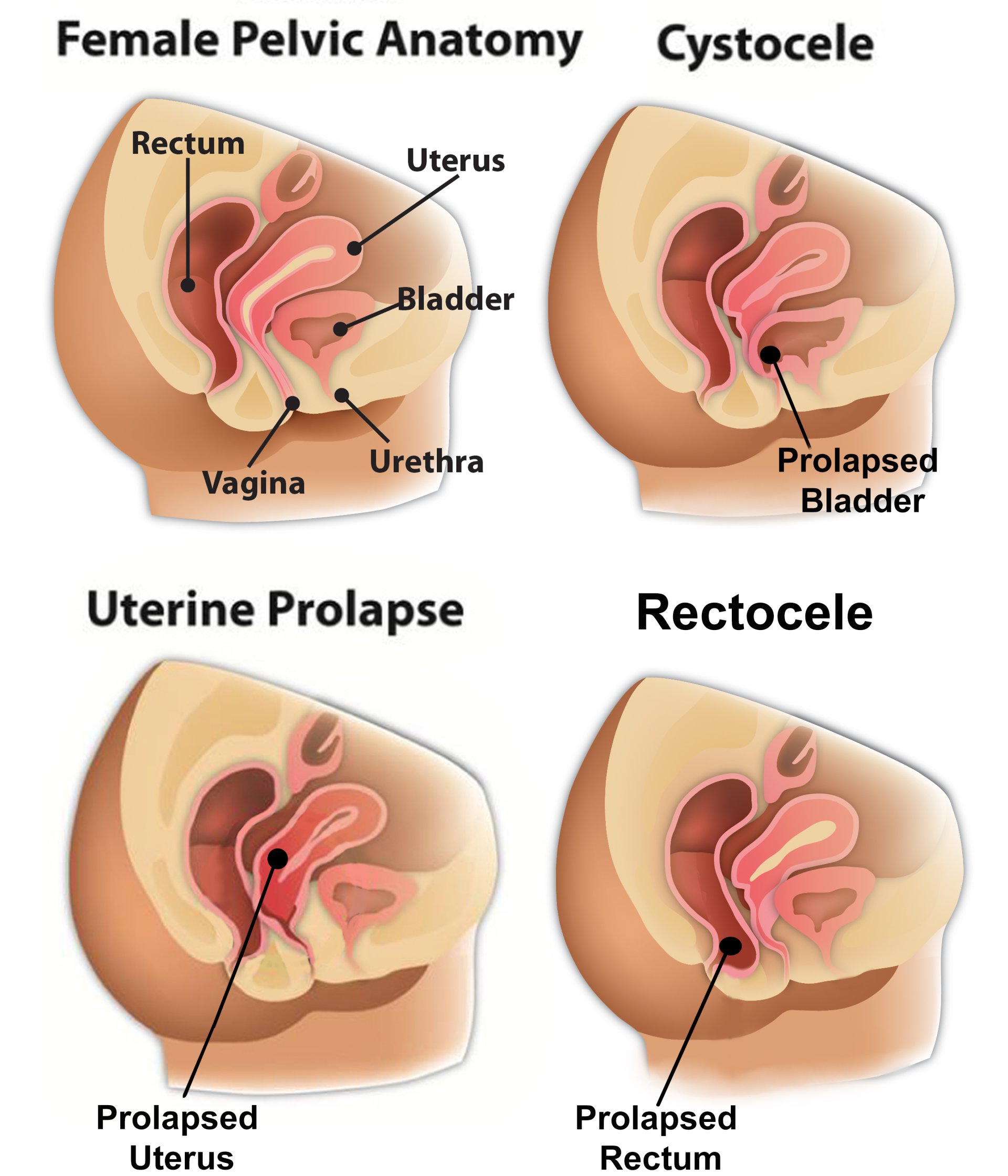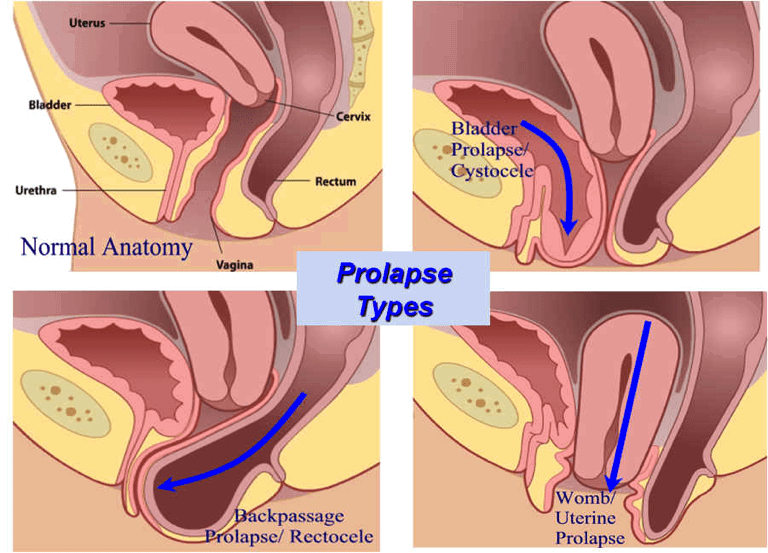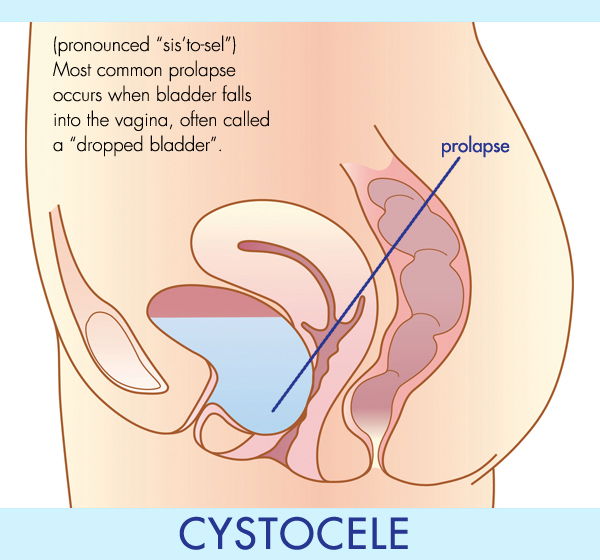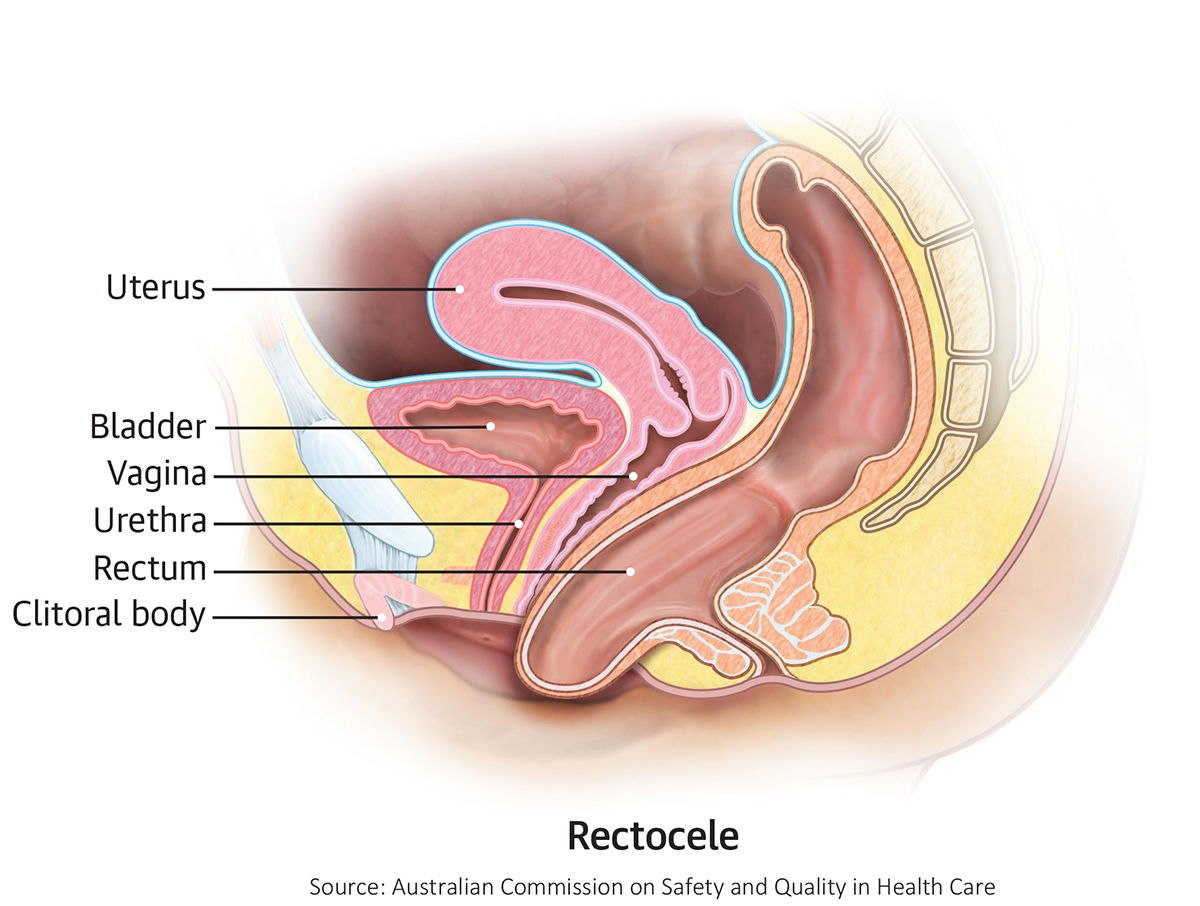Colporrhaphy (Prolapse surgery)


Cystocele Repair (Anterior Colporrhaphy)

What is a cystocele repair?
A cystocele is a type of hernia in which the urinary bladder pushes against weakened tissue in the front wall of the vagina. It causes a bulging into the vagina. Common causes of a cystocele are aging and pregnancy with vaginal delivery.
A cystocele repair is an operation that lifts and tightens the tissue around the bladder so that it no longer pushes against the vagina.
Rectocele Repair (Posterior Colporrhaphy)

What is a rectocele repair?
A rectocele is another type of hernia in which the rectum pushes against weakened tissues in the back wall of the vagina. Both conditions cause a bulging into the vagina. They may be caused by aging, surgery, or pregnancy with vaginal delivery.
A cystocele and rectocele repair is an operation that lifts and tightens the tissue around the bladder and rectum so these organs no longer push against the vagina.
When is it used?
Surgical repair is done to relieve symptoms that may be caused by a cystocele, a rectocele, or both.
Symptoms of a cystocele may include the following:
If the urethra (the tube through which urine drains from the bladder) is pulled out of position, you may leak urine when you cough, laugh, or lift a heavy object. (This is called stress incontinence.)
Your bladder may not empty completely after you urinate. The urine remaining in the bladder may then become infected, causing frequent and very painful urination.
You may have bulging and pressure sensations in the vagina.
A rectocele may cause constipation by interfering with muscle contraction in the rectum.
Examples of alternatives to cystocele and/or rectocele repair include:
doing muscle-strengthening exercises, called Kegel exercises
having only the bladder repaired
having only the rectum repaired
placing a pessary in the vagina (A pessary is a device that can be put into the vagina to support the vaginal walls. Your doctor can help you choose an appropriate one.)
choosing not to have treatment, recognizing the risks of your condition.
You should ask your doctor about these choices.
How do I prepare for a cystocele repair?
Plan for your care and recovery after the operation. Allow for time to rest and try to find people to help you with your day-to-day duties.
Follow instructions provided by your doctor. Eat a light meal, such as soup or salad, the night before the procedure. Do not eat or drink anything after midnight and the morning before the procedure. Do not even drink coffee, tea, or water.
What happens during the procedure?
You are given a regional or general anesthetic. A regional anesthetic numbs part of your body while you remain awake. A general anesthetic relaxes your muscles, makes you feel as if you are in a deep sleep, and prevents you from feeling pain.
The doctor will make a cut in your vagina and expose the tissue between the vagina and the bladder. He or she will try to support the bladder by bringing more tissue around it. The doctor will remove any tissue from the vaginal wall that has stretched from aging or pregnancy. If incontinence is a significant symptom, the doctor may also perform an elevation or suspension procedure on the bladder. Then the cut in the vagina will be sewn closed.
The doctor may place a catheter (a tube for urine passage) in your bladder and lead it out either through a cut made in the abdominal wall or through the urethra (the tube through which urine normally flows). This will help you pass urine while you are recovering and decrease the pressure inside your bladder.
What happens after the procedure?
You may stay in the hospital about 2 to 6 days. The catheter may stay in your bladder 2 to 6 days or until your bladder is working again.
During the first 4 weeks after the operation, there may be some smelly, sometimes bloody drainage from your vagina.
After you go home from the hospital, avoid all heavy activity such as lifting for the first 2 weeks. Then gradually increase your activity during the next 4 weeks.
Ask what other steps you should take and schedule checkups with the doctor 2 and 4 weeks after the operation.
What are the benefits of this procedure?
It should help you to be more active. You might be able to resume your normal level of activity without leaking urine. Bulging and pressure sensations in the vagina will be relieved.
What are the risks associated with this procedure?
There are some risks when you have general anesthesia. Discuss these risks with your doctor.
The regional anesthetic may not numb the area quite enough and you may feel some minor discomfort.
Your bladder could be punctured. If this happens (and your doctor sees it), the doctor will try to correct it during the operation.
You may develop an infection or bleeding.
You should ask your doctor how these risks apply to you.
When should I call the doctor?
Call the doctor immediately if:
The catheter becomes plugged and you stop passing urine.
You develop a fever.
You have heavy bleeding from your vagina.
Call the doctor during office hours if:
You have questions about the procedure or its result.
You want to make another appointment.

This content is reviewed periodically and is subject to change as new health information becomes available. The information is intended to inform and educate and is not a replacement for medical evaluation, advice, diagnosis or treatment by a healthcare professional.